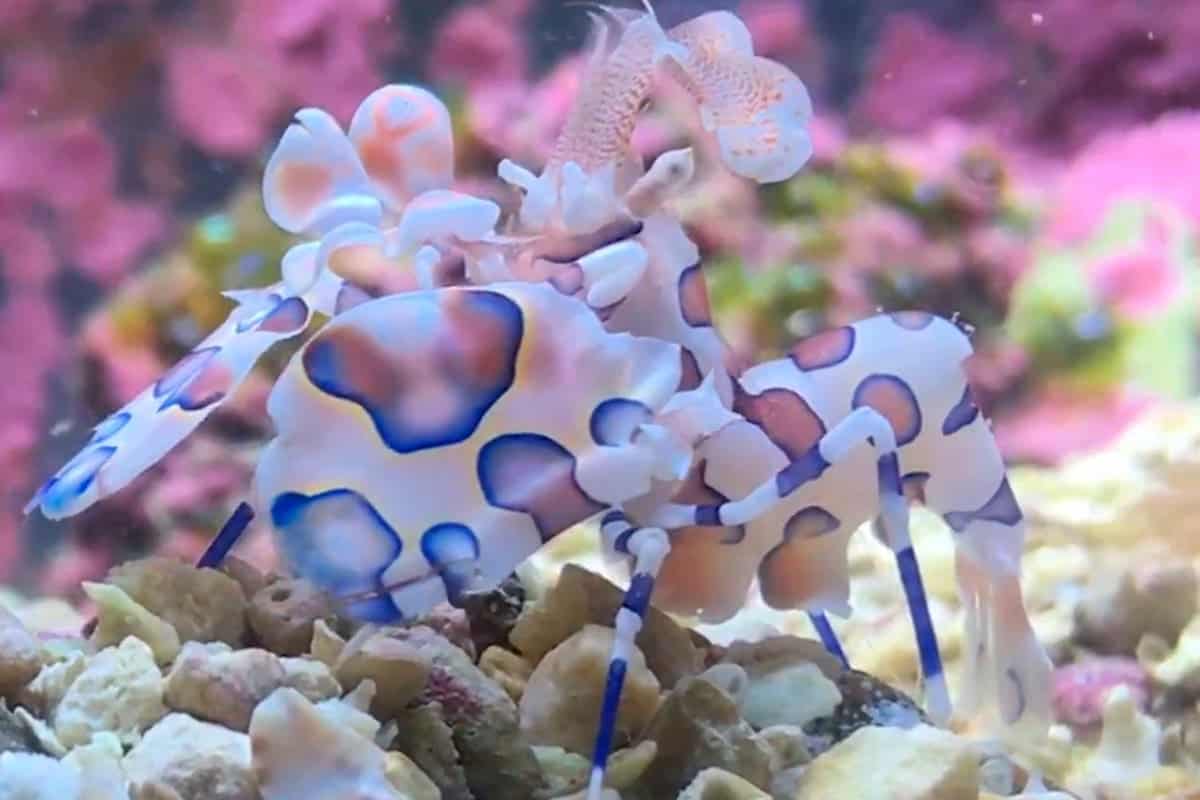Harlequin Shrimp
Harlequin Shrimp
check_circle Fast Shipping
check_circle Quality Products
check_circle Affordable Price
Reach out to us on ''available to order'' items via WhatsApp or email
Low stock: 3 left
Couldn't load pickup availability

Harlequin Shrimp
package_2
Product Description
Product Description
Common Name: Harlequin Shrimp Scientific Names: Hymenocera picta (Pacific form – more white/pink) Hymenocera elegans (Indian Ocean form – more white/blue) Origin: Indo-Pacific, including Fiji, Hawaii, and Indonesia Size: 1.5–2 inches (3.8–5 cm) Lifespan: 1.5–2 years Appearance: Bright white or cream-colored body with blue or purple spots Flattened, paddle-shaped claws Elaborate antennae and leg markings Moves with graceful, almost “dancing” motions Very peaceful and shy Territorial toward others of its kind — best kept as a mated pair or solo Will spend most of its time in a sheltered spot when not hunting Incredible predators — specialized in feeding exclusively on starfish Tank Size: Minimum 20 gallons (30+ preferred for stability) Temperature: 72–78°F (22–25.5°C) Salinity: 1.023–1.025 specific gravity pH: 8.1–8.4 Ammonia/Nitrite: 0 ppm Nitrate: < 20 ppm Aquascape: Provide lots of live rock, overhangs, and caves for hiding ⚠️ Specialized Predator – Diet is Starfish Only Feeds exclusively on live starfish, including: Asterina stars (tiny hitchhiker stars – often used as their primary food) Chocolate chip starfish (frequently used in feeding rotation, though these are not reef-safe) Linckia and Fromia stars (can be fed, but expensive and may not survive well in captivity) Shrimp will flip the starfish, paralyze it, and consume it slowly over several days Must be fed live starfish every 1–2 weeks In pairs, feeding demand increases ⚠️ Harlequin shrimp will starve without access to starfish. They typically refuse all other foods, including frozen or pellet foods. Not reef-safe for starfish — will attack all types, even ornamental reef-safe stars like Linckia or sand sifters Cannot be housed with aggressive fish (e.g., triggers, wrasses, hawkfish) Very sensitive to water quality — stable parameters are essential Can coexist peacefully with most inverts and reef-safe fish that won’t eat them Clownfish, gobies, blennies, firefish Peaceful shrimp (e.g., cleaner or peppermint shrimp) Snails, hermits, corals (non-star-shaped) Predatory fish (lionfish, wrasses, hawkfish, triggers, puffers) Any type of starfish you wish to keep alive Other Harlequin shrimp unless you have a bonded pair Feeding rotation: Many aquarists keep a supply of chocolate chip stars in a separate tank and rotate them to feed Harlequin shrimp. Asterina control: They are sometimes introduced to tanks with Asterina starfish infestations — but will wipe them out completely, then require supplemental feeding. Breeding: They will reproduce in captivity as a bonded pair, but the larvae are nearly impossible to raise in home aquaria.🦐 Harlequin Shrimp Care & Description
🔍 Description
🧠 Behavior and Temperament
🧪 Tank Requirements
🍽️ Diet and Feeding
⚠️ Care Considerations
✅ Good Tankmates
❌ Avoid With
🌟 Bonus Tips


